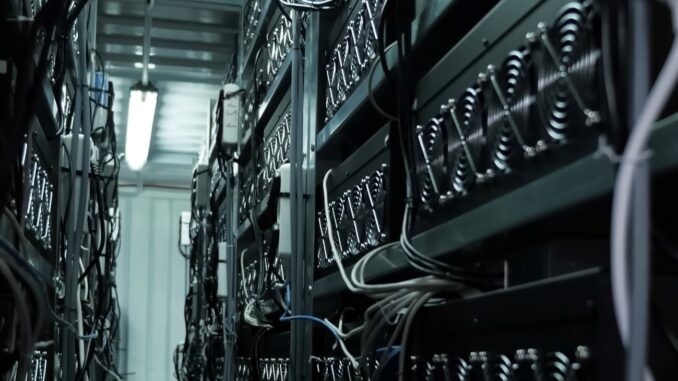
Key Takeaways
Bitcoin mining stocks have underperformed Bitcoin heavily over the last year
Greater competition among miners and higher amounts of energy required means margins are thinner
Rising electricity costs and lower value of Bitcoin have also hurt miners immensely
Greater number of variables beyond merely the price of Bitcoin means mining stocks have been trading with greater volatility
It’s a tough time to be a Bitcoin miner. This piece will succinctly break down how and why, as well as delving into why I believe mining stocks are far riskier than just investing in Bitcoin itself. Let’s get to it.
Mining competition is higher than ever
Firstly, the competition within mining is higher than ever before. The beauty of the blockchain is that we can see all sorts of statistics regarding the Bitcoin network in real-time. One of these is the difficulty adjustment. For the uninitiated, the difficulty adjustment is a mechanism by which the difficulty of mining changes to ensure the new supply of Bitcoin released via mining remains consistent (at approximately ten-minute intervals).
In other words, as more miners join the network, the difficulty increases so that Bitcoin is released at the same pace as prior. The same holds true the other way around – difficulty falls if miners stop operating.
As the below chart shows, Bitcoin mining difficulty recently smashed through the 50 trillion hash mark for the first time ever. Only three years ago, that number sat at 14 trillion.
This is great for the Bitcoin network: the more miners, the more secure the network. For the miners themselves, however, that means greater energy amounts are needed to complete this now-more-difficult assignment of validating transactions on the network.
Oh, and there is a double whammy. As you may realise if you have turned on a light, charged your phone or boiled a kettle in the last year, the price of electricity has skyrocketed around the world. The next chart shows the rise in electricity costs in the US, which according to the Cambridge Electricity Consumption Index, has the highest amount of miners (the nation is responsible for 38% of the network’s hash rate).
This means that higher amounts of energy are needed to mine, and the cost of that energy has also increased drastically.
People are using Bitcoin less
So, we know costs have risen. But the bad news isn’t over yet.
Bitcoin’s volumes have collapsed throughout the bear market. Perhaps the best barometer of this is to look at the trading volume on centralised exchanges, which fell 46% in 2022 compared to 2021.
Looking at Bitcoin fees shows a similar pattern, with fees far down on the heyday of the pandemic bull market. This was briefly interrupted in May when the Bitcoin Ordinals protocol sparked a revival in network activity. However, the below chart shows that fees have been falling for five consecutive weeks since (although they are still up significantly on the start of the year), giving up most of those gains.
Much like the cost side, which saw an increase in inputs required (greater demands via the difficulty adjustment) as well as an increase in the per-unit costs of those inputs (rising electricity costs), the revenue side for miners is also suffering from a brutal double whammy.
Not only is volume way down from the bull market and hence less fees (revenue) are recouped, but miners’ revenue (fees and the block subsidy award) is received in Bitcoin, which has also fallen in value. This means that, after earning Bitcoin by battling with the greater competition and toiling over increased costs, the value of that Bitcoin (revenue) on the market is substantially less – still 60% off its peak from November 2021.
Mining stocks are more volatile than Bitcoin
So let’s think about these four variables:
The amount of energy needed
The cost of that energy (electricity)
The fees and block rewards received (i.e. revenue)
The value of those fees and block rewards (the Bitcoin price)
Therefore, not only are mining companies dependent on the price of Bitcoin (variable number four), but it also depends on several other factors (admittedly variables 1 and 3 are heavily dependent on the price of Bitcoin too. In truth, economic incentives will drive mining to a certain price point, but I will discuss in another article).
Therefore, for the time being at least, the risk is greater with mining stocks than a direct investment in Bitcoin. As with all things, greater risk can mean greater reward, and there have been periods of mining stocks outperforming Bitcoin as a result.
However, over the last year or so, mining investors are in an even worse state than Bitcoin investors (who themselves are licking their wounds). I’ll let the below mining ETF, launched in February 2022, illustrate this:
All this goes to show how tough mining has been. And that is without even mentioning the big bad wolf that is regulation. The regulatory crackdown in the US has been ferocious, and while Bitcoin has thus far been relatively unaffected, miners are more vulnerable (especially those that are publicly listed in North America) than Bitcoin itself, which is a decentralised asset theoretically immune to regulation (directly, at least).
This is not meant to be a pro-Bitcoin or anti-mining piece. It is just comparing the two as investments and showing why mining stocks tend to be more volatile. And when you’re more volatile than Bitcoin, that is really saying something.






Be the first to comment